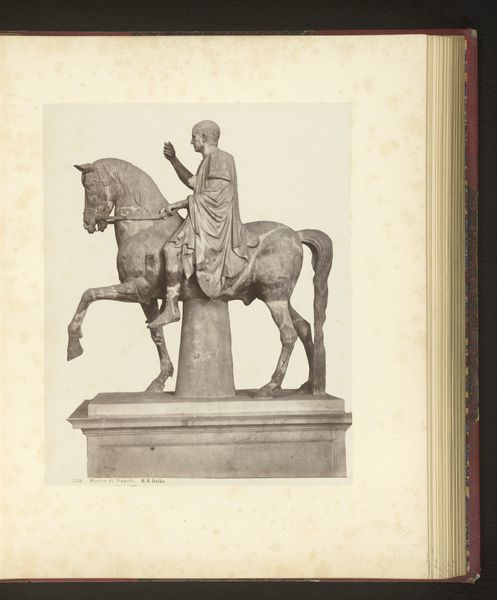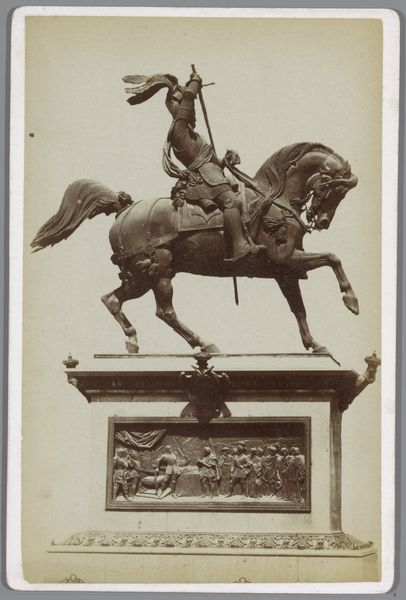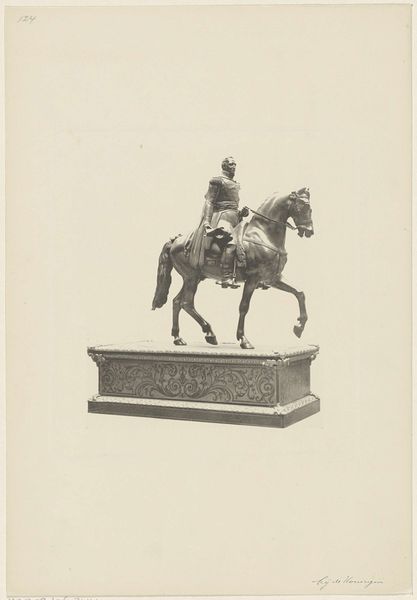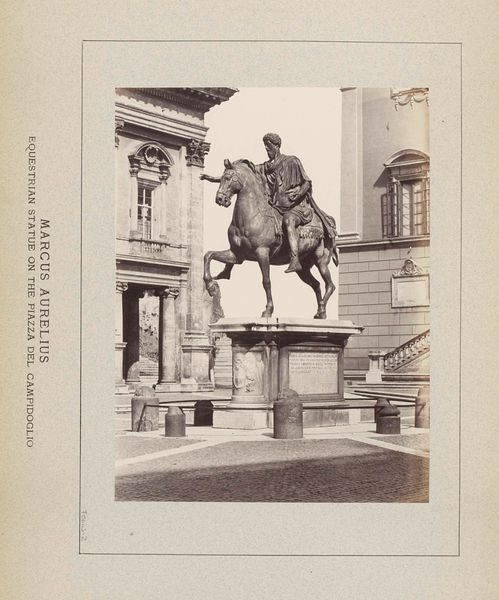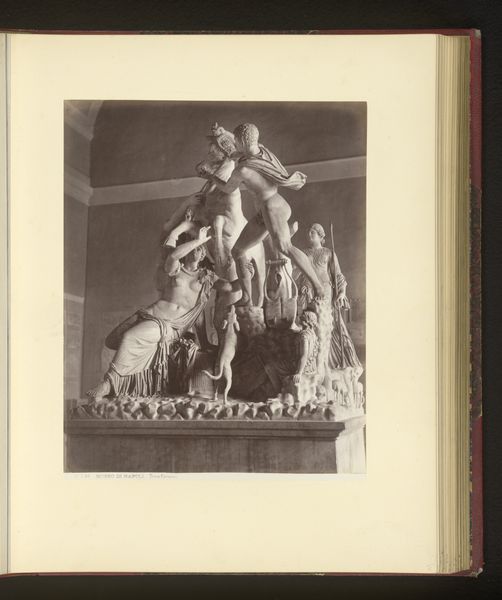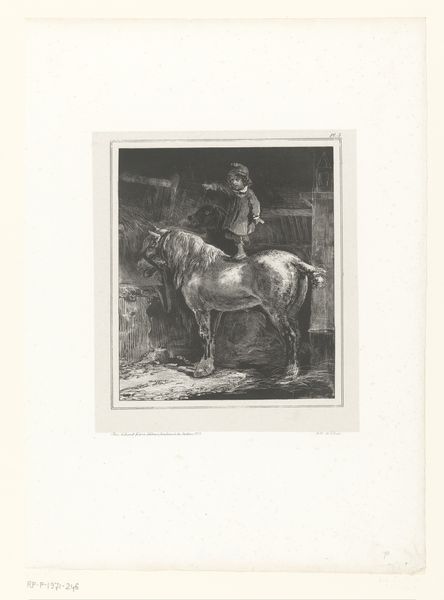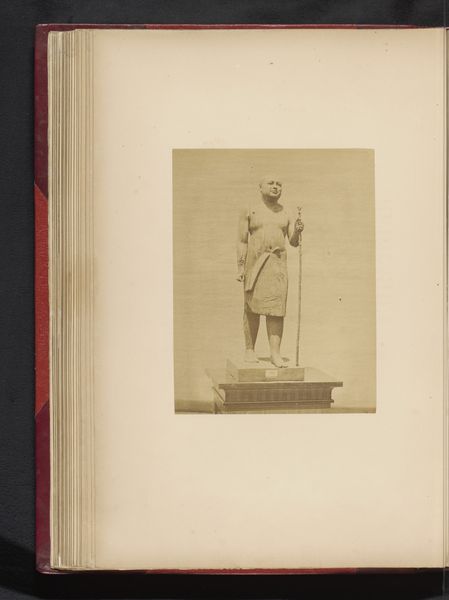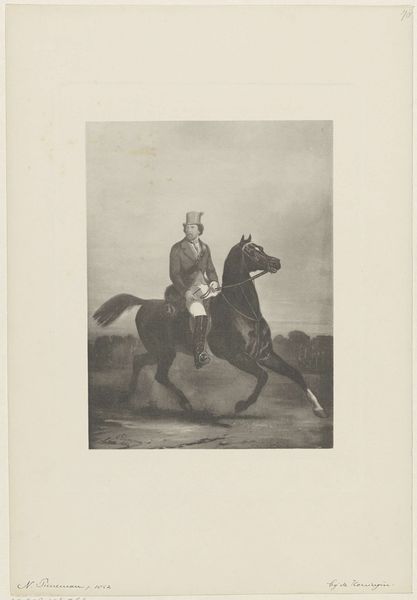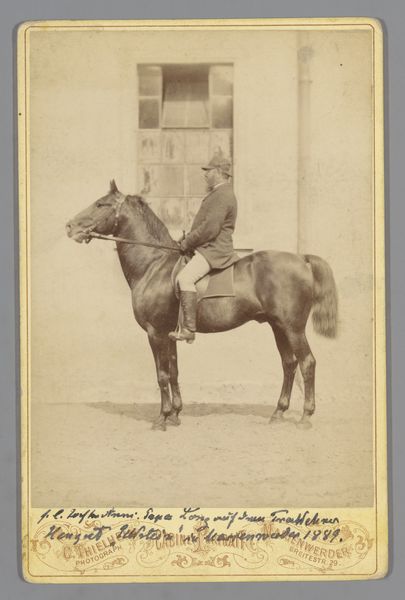
Ruiterstandbeeld van Marcus Aurelius op de Capitolijnse heuvel te Rome, Italië 1851 - 1890
0:00
0:00
print, photography, sculpture, gelatin-silver-print
#
portrait
# print
#
greek-and-roman-art
#
photography
#
sculpture
#
gelatin-silver-print
#
cityscape
#
history-painting
#
erotic-art
Dimensions: height 324 mm, width 250 mm
Copyright: Rijks Museum: Open Domain
Curator: This gelatin silver print, taken sometime between 1851 and 1890, presents a photographic rendition of the equestrian statue of Marcus Aurelius located on the Capitoline Hill in Rome. Editor: What immediately strikes me is the somber, almost reverential quality the sepia tones lend to the subject. The horse seems unnaturally still, adding to the overall effect. Curator: Observe how the photographer uses light to accentuate the textures and details of the sculpture, giving it a certain gravitas. It also creates this sort of contrast, where certain textures like the toga, or the horse's mane, seems incredibly life-like, even if that's not the actual color of either of the sculpture's components. Editor: It is indeed a powerful contrast. Now, considering its setting, what does this image tell us about the public role of the statue at that time? Was it merely a historical artifact, or did it still function as a symbol of imperial power? Curator: It continued as a very significant symbol. In the nineteenth century Rome, the sculpture became even more intertwined with evolving nationalistic aspirations, almost operating like a site for reflecting and also contesting ideals regarding both Italian cultural identity and political identity, I would argue. Editor: And, of course, one has to consider the context of photography itself in this period. As a relatively new medium, it offered a way to disseminate images of important cultural icons more widely than ever before. How did this impact our view of the sculpture, beyond artistic appeal? Curator: In essence, these photographic representations served as vessels that carried meanings beyond mere visual documentation. It's very telling. Editor: Yes, by focusing closely on composition and detail, one appreciates how form informs the experience of content across time. Curator: It's quite compelling when the convergence of material, symbol, and process creates historical narratives, no?
Comments
No comments
Be the first to comment and join the conversation on the ultimate creative platform.


